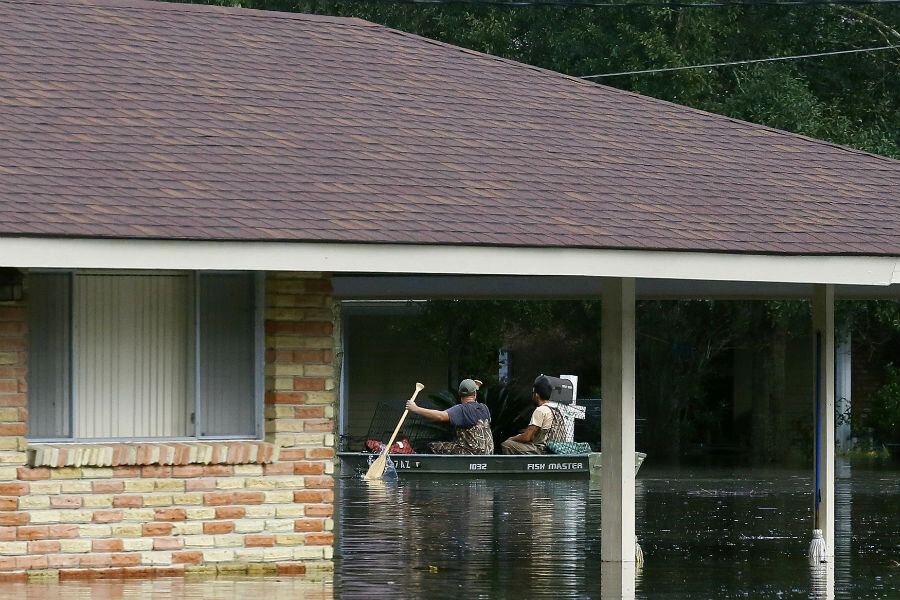Has the national media overlooked the floods in Louisiana?
Loading...
With 20 parishes declared federal disaster areas, at least 13 people dead and over 30,000 people rescued by emergency responders, flooding has overwhelmed the state of Louisiana. For many locals, the disaster has resurrected memories of hurricane Katrina’s ravages – along with feelings of neglect.
This time, their ire seems focused on the national media. Coverage of Katrina and Sandy was lavish, even where the response of authorities left much to be desired. In advance of Sandy's arrival, notes Slate, the New York Times unveiled a landing page on its website featuring practical information about services for residents in crisis. But this month, even after the National Guard had begun rescuing thousands of people from parishes swallowed by floodwaters, the Times went days without running a single story about the disaster. CNN and other prominent television outlets paid similarly scant attention.
“It’s not just water that's rising. So is the frustration level of many observers who can't help but notice a key absence amid the tragedy: the national media,” wrote Mike Scott for the New Orleans Times-Picayune on Aug. 16.
“Such complaints aren't trivial,” he added. “As Louisiana well knows, the loosening of the recovery purse strings is directly commensurate to the number of people who are made aware of the scope of the devastation. In this case, where national news coverage has been scarce, locals have every reason to worry that recovery funds will be just as scarce.”
That same day, Louisiana and FEMA officials expressed dismay at the lack of national coverage of what Gov. John Bel Edwards called “unprecedented flood levels.”
"You have the Olympics. You got the election. If you look at the national news, you're probably on the third or fourth page," said FEMA administrator Craig Fugate, according to the Times-Picayune.
A blog post from the New York Times’s public editor Liz Spayd took stock of the complaints, noting little evidence of on-the-ground reporting, and concluding that her paper’s coverage had been “particularly weak.”
“No doubt this is a busy news period, and the fact that it is August compounds the usual challenges of getting available staff to the site of the news,” wrote Ms. Spayd. “But a news organization like The Times — rich with resources and eager to proclaim its national prominence — surely can find a way to cover a storm that has ravaged such a wide stretch of the country’s Gulf Coast.”
Accusations of a lackluster response have extended to the White House as well. The Christian Science Monitor noted on Friday that many in Louisiana and elsewhere had begun to compare President Obama’s decision not to immediately visit the state to his predecessor’s notorious handling of Hurricane Katrina. The White House says the president will arrive on Tuesday after receiving briefings from Homeland Security secretary Jeh Johnson, who made an earlier visit to the region.
One reason for the lack of attention from the press – though perhaps no excuse – may partly explain why so many Louisianans were unprepared.
“If you had a hurricane forecast and you had a named storm, more people would have been aware of what the risk was,” said Mr. Fugate on NPR. “But the weather service opened up a fairly high risk of serious flooding. It just was hard to say how deep it was going to be. And nobody, I think, was prepared for that much rain in that short a time.”








